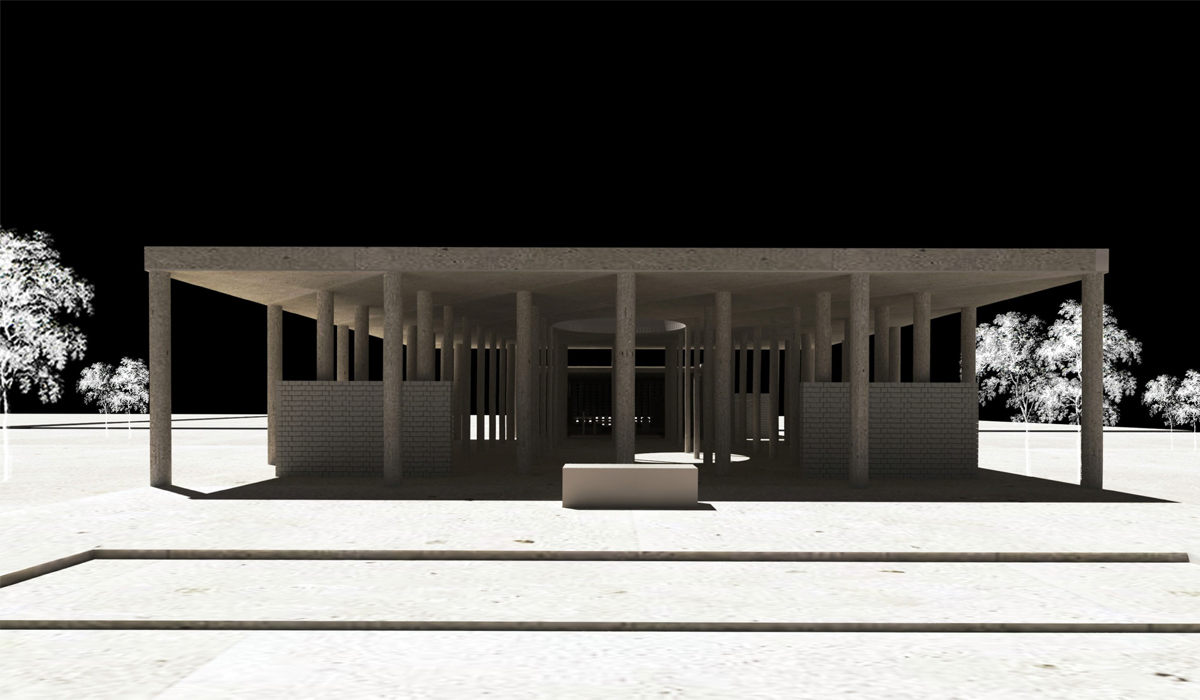
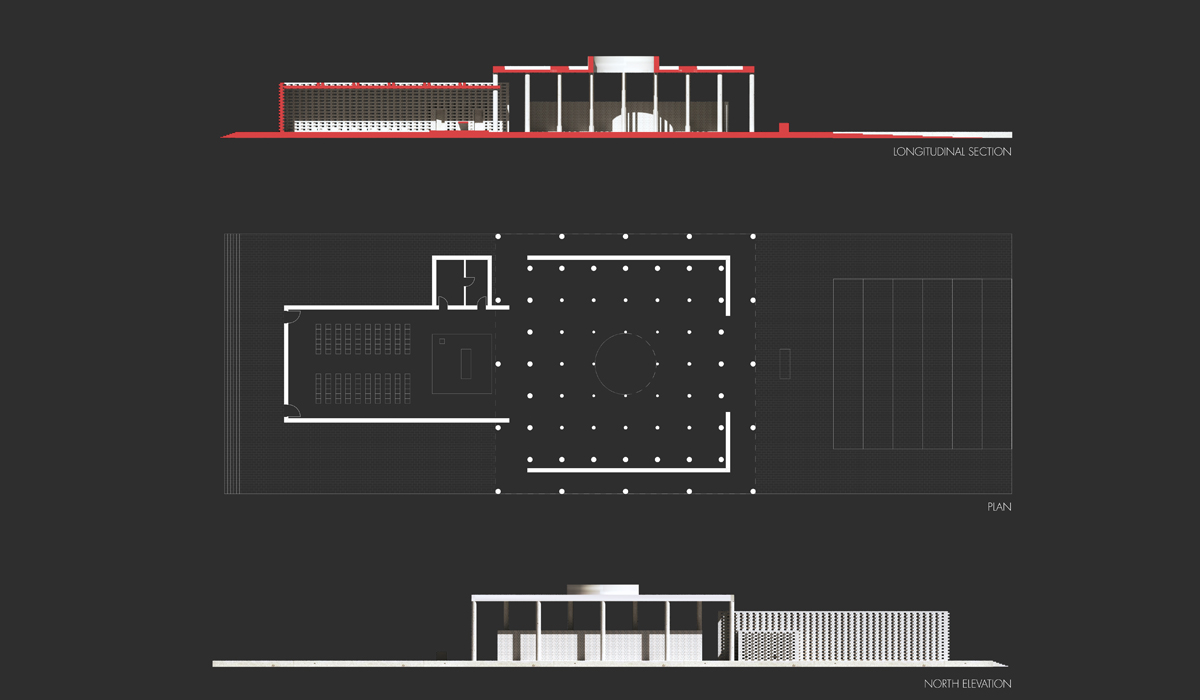
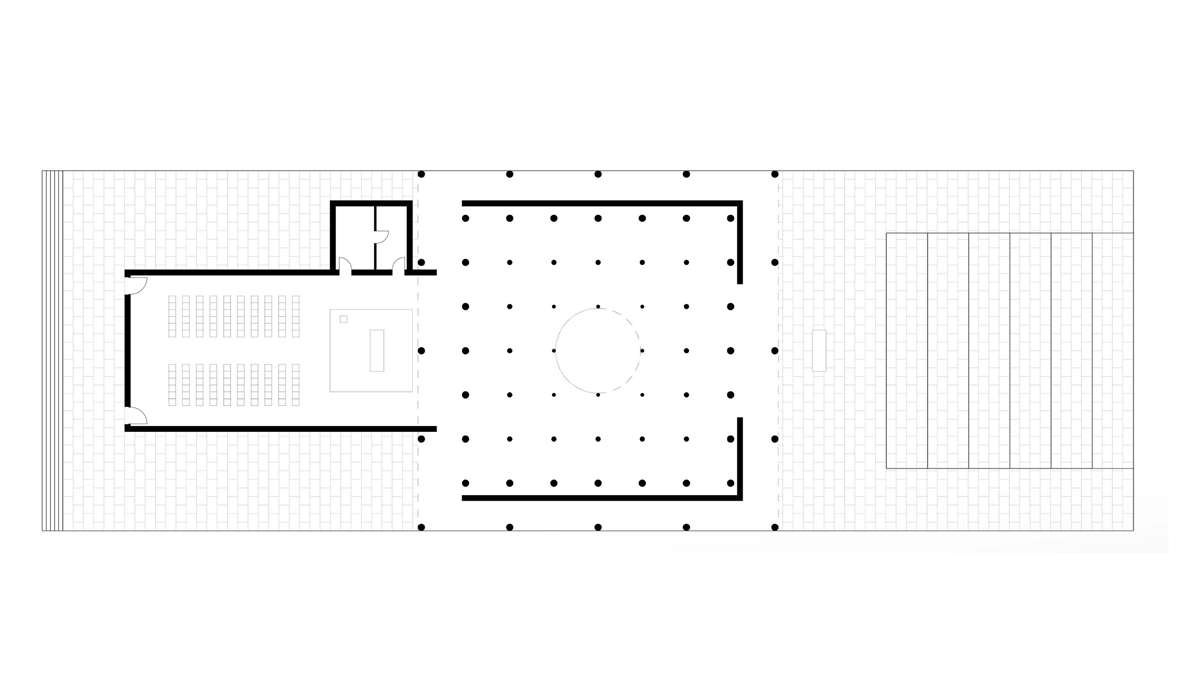
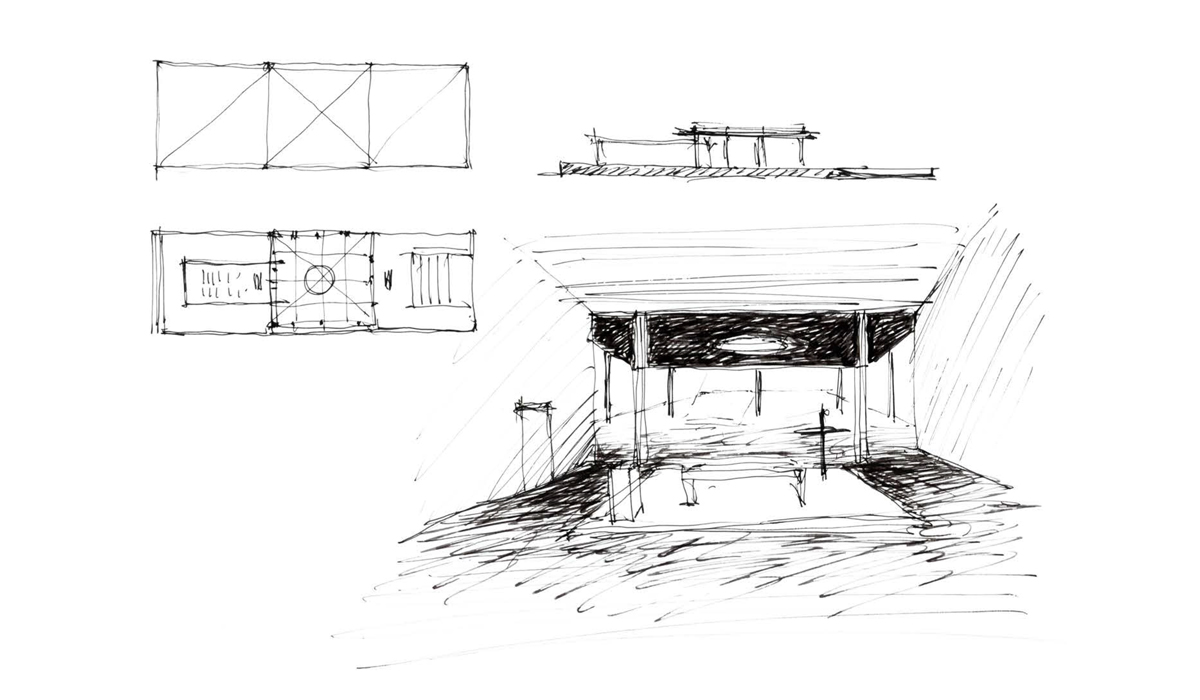
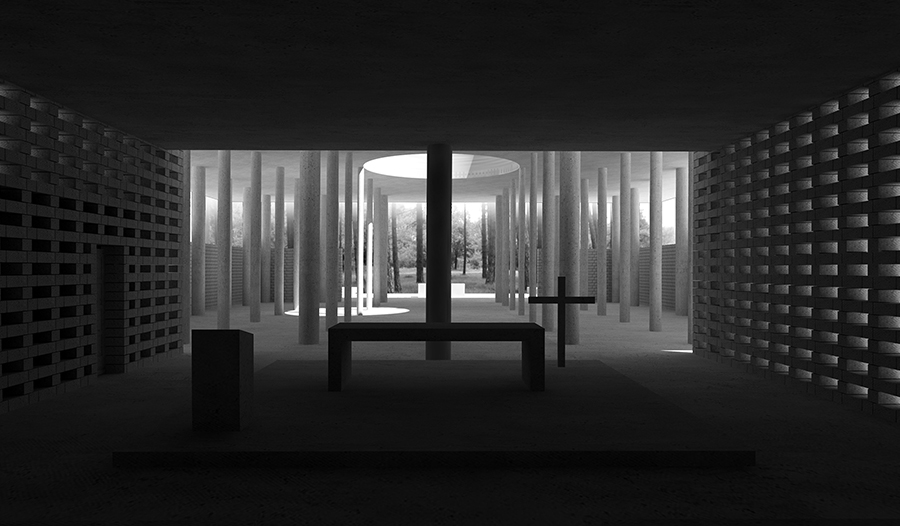
Rwanda Chapel
Rukomo, Rwanda, Giugno 2019
Spaces for holy rites are places where ritual looks like a mise-en-scene that drives the participants toward the object of celebration: the “mysterious other”. Everything involved in ritual – spacing of course – suggest to the “other” so that it can be felt by participation in celebrations: the perception of divine passes through vision. Throughout ritual’s development the staging become a sort of inner theater. In a small way the typology of chapel recognizes canonical characters in sacred spaces. Therefore, it can deny representation part of ritual celebrated in its internal area. This is primary meaning of these spaces. What are the architectural characters of divine? It’s difficult to find tangible elements to explain the complexity of religious theme but is possible to suggest it by symbolical approach. Every religious building in architecture history follows this research line. The dome (sky), the choir (presence of god), the oculus (access of divine light). Especially the oculus: it is the central element because it’s crossed by light and at the same time hides its origin replacing idea of divine’s source. The assembly hall is a functional space that looks at symbolic elements; it’s a liminal space: it shows staging and replicating every time the primal rite. These contents are also right for outdoor audience spaces in which nature is the space where divine resides, generating everything. The difference between these two spaces is just because of shelter. The turning point of composition in which the necessary symbolic takes place is hypostyle space where columnar structure replaces natural forest and the oculus is the connection with divine. Every assembly space (chapel and churchyard) are focused on this element. A fixed scene to look through but able to drag assemblies into dimension of the “other” to look inside. The three-spaced system – chapel, hypostyle, churchyard – are placed on crepidoma that raises the places of ritual from soil-nature and holds them together.
The podium supports walls is 0,60 meters high and defines in three places square-shaped the composition order: three modules of side 26,00 meters develop a rectangle shape of 78,00 x 26,00 meters. Each square has a clear function: the middle one is the symbolic space. The hypostyle is of side 26,00 meters, the roof is on columnar structure and it is 6,00 meters high. The “quinconce” disposition with circular sections sloping from the perimeter toward the center makes this space the point of maximum abstraction, structural rarefaction and also the brightest part because of the presence of oculus. The distance among columns is due to be easily involved by local building traditions, in fact the beam system of the roof is outside up. The chapel is smaller than the hypostyle and is on one side of this. It’s thought and designed as an ele- mental space: a box of 11,80 x 22,00 meters large and 5,00 meters high, illuminated in his internal space by sunlight filtering through the perforated texture of the brick wall. The twilight into the church is in opposite of the light beam projected from the oculus. The service spaces of the chapel, sacristy and confessional, are added in a smaller volume to the principle. The facade behind the altar is dissolved into the space scene created by hypostyle. The Cross placed on the basement of the altar underlines the relation between Christ and the earth.